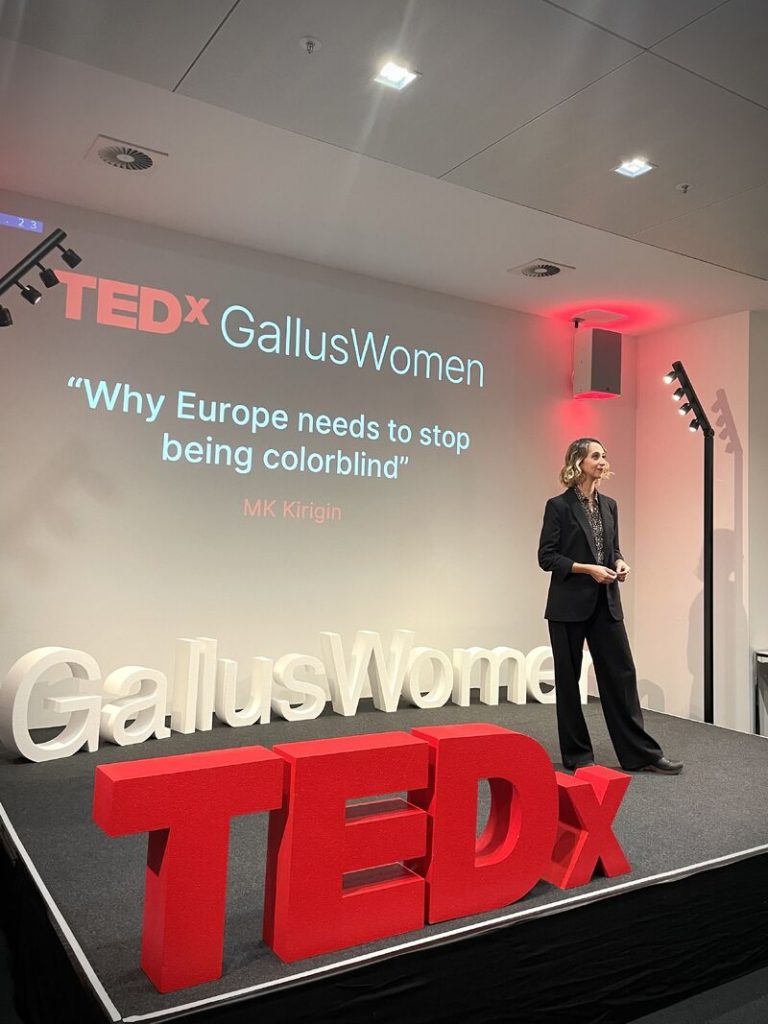Since the official end of the COVID-19 pandemic in May 2023, the work landscape has seen a surge in return-to-office regulations across different industries — to the disgust of many employees who are reluctant to return to the way things were before. Amazon’s big RTO announcement last September sparked outrage on social media and a wave of “rage apply.” According to a poll conducted by the anonymous job review site Blind, 73% of Amazon staff are considering looking for another job because of the in-office work policy.
Amid the intense debate, one aspect that even some ardent champions of remote work may sometimes overlook is, in fact, a crucial argument for flexibility: inclusion.
The peak of remote work during the pandemic was particularly beneficial for a group of workers who previously had limited opportunities in traditional work settings: “Workplace flexibility benefits communities for whom traditional work hours and expectations have always been limiting, such as neurodivergent folks and parents or caregivers, for example,” says global DEI (diversity, equity, and inclusion) expert MK Kirigin. Now, as flexibility experiences a setback, Kirigin sees the situation as “disappointing” and hopes that the push for inclusion won’t have to wait until the next global health crisis to resurface: “I’d love to see us continue innovating to create more accessible workplaces without having to go through another global crisis to get there.”
Bolivia-born Kirigin comes from an impressive multicultural background, having a long list of countries where she has lived as an immigrant: Nicaragua, Georgia, Jordan, the U.S., Germany, and now the U.K. The experience of constantly adapting to new cultures fostered her interest in themes such as the formation of collective identity, group dynamics, and social justice, leading her to pursue a master’s degree in Education Policy and Management at Harvard.
At Harvard, Kirigin developed and led the training program for the prestigious Equity & Inclusions Fellows. Since then, she has developed data-driven DEI strategies across the public and private sectors in Europe and America. In October 2023, she presented her learnings and personal immigration story in a TEDx Talk titled “Why Europe Needs To Stop Being Colorblind.” She is currently pursuing an MSc in Human Resources and Organizational Behavior at the London School of Economics and Political Science.
In the following interview, Kirigin reflects on the impact of recent tech layoffs and RTO policies on diversity and inclusion, shares insights on how to measure DEI initiatives, and discusses best practices for recruiting and empowering diversity officers.
TechTalents Insights: How did the pandemic impact the global DEI movement?
MK Kirigin: I think the pandemic forced us to reckon with deep inequities in the workplace, especially for marginalized communities. Having to stay home forced us to innovate new ways of remote and hybrid work, which turned out to be much more accessible for a greater number of people. Workplace flexibility benefits communities for whom traditional work hours and expectations have always been limiting, such as neurodivergent folks and parents or caregivers, for example. This means we’ve seen the labor force grow substantially to include a new contingent of workers, which is exciting.

TechTalents Insights: How do you see the return-to-office policies, and the post-pandemic work landscape as a whole?
MK Kirigin: It’s been disappointing to see many organizations now pushing to go back to the way things were before. Although some remnants of the initial momentum towards flexibility still remain, I’d love to see us continue innovating to create more accessible workplaces without having to go through another global crisis to get there.
We also saw an increased awareness and commitment to action on matters of racial justice during the pandemic. I saw more business leaders finally start talking openly about race and racism in the workplace. I actually moved to Europe in the middle of the pandemic, so it was especially meaningful to me to see this movement expand outside of the U.S., where the majority of racial justice conversations tend to concentrate. Unfortunately, I think many organizations that committed to taking action in the summer of 2020 ended up cutting those programs as the global conversation around racial justice died down post-pandemic. But I do think it sparked and highlighted a growing interest in talking more openly about race and racism in Europe — just speaking from personal experience, as that’s where I’ve been living.
TechTalents Insights: DEI teams are often among the most affected by the recent tech layoffs. What are your thoughts on this?
MK Kirigin: Yes, sadly, this is a disappointing but common trend in today’s economy. DEI is (mistakenly) perceived as non-essential to business impact, so it is often the first to see budget cuts or even layoffs. The irony of it is that DEI initiatives focused on creating a positive company culture and sense of belonging are precisely what is needed after a round of layoffs when employee engagement and psychological safety sink dramatically. So, even though it might be a short-term way to save costs, I’ve seen how it can end up damaging company culture, retention, and employer branding in the long term.
TechTalents Insights: How can companies effectively measure DEI initiatives? Any recommendations or insights?
MK Kirigin: As a DEI officer, data is your best friend, but you need to know how to interpret it and how to tell a story with it. If you haven’t already, I would start with a comprehensive DEI assessment to determine a baseline and identify needs, followed by a data-informed DEI strategy with a short, prioritized list of initiatives. Don’t aim too high, make your goals realistic, and make peace with the fact that DEI initiatives are a long-term investment and you may not see changes immediately. Have patience and measure progress along the way. For each initiative in your strategy, I would choose one main metric to measure its progress. Although employee demographics can be measured in an annual diversity survey, I would say an inclusion/climate survey is more effective when measured more regularly, perhaps quarterly. This allows you to make adjustments along the way as necessary.
I would also make sure to embed DEI metrics across all departments to ensure company-wide progress, rather than isolating it to only HR. You need to make sure everyone understands the why behind what you’re measuring and how it will be used for the benefit of employees. And again, measuring rote data is one thing, but you need to understand what story the data tells and how to communicate and adapt it for stakeholders across seniority levels. And if you have employee resource groups, make sure they’re involved in the design and analysis of the data so that your DEI efforts don’t feel too top-down — you should be developing DEI initiatives with them, not just for them.
As for more specific advice regarding diversity survey design, I would make sure anything you ask is specifically aligned with your DEI strategy, or is information you can actually take action on or use to generate buy-in for new initiatives. Don’t ask for more information than you need, or employees will get survey fatigue or lose trust in how you’re using their data.
TechTalents Insights: Can you share an example of how to ask questions properly?
Kirigin: For example, if you’re including a question about LGBTQIA+ identity, I generally recommend keeping it as a simple “yes/no” question rather than having a long list of different identities within the LGBTQIA+ umbrella. This is for several reasons. The list of identities within the umbrella is always evolving. Sexuality is fluid, and perhaps an individual will identify as something other than they did last year, which would affect your year-on-year data. And lastly because, in order to develop inclusion initiatives for this community, you don’t need to know precisely how many employees are bi versus gay versus ace [people in the asexual spectrum] — you just need to know in aggregate what percentage of employees identify within the broader LGBTQIA+ umbrella. So don’t be nosy! Only ask for what you need.
Also, make sure you don’t skip race and ethnicity as part of the diversity metrics you measure. GDPR is no excuse to avoid having conversations about racism in the workplace.

TechTalents Insights: You’ve lived in different countries in the Americas, the Middle East, and Europe. How has this background of being in constant movement shaped your views on diversity? In other words, what are the benefits of being a “third-culture kid”?
Kirigin: Yes, I grew up moving to a new country every two years since I was seven years old, so I am very much a third-culture kid! For those unfamiliar with the term, “third-culture kid” refers to someone who grew up in places or cultures that are different from that of their parents’ culture. The “third culture” is a blend of their parents’ culture at home, which is the first culture, and the culture of the new places to which the kid moves, or the second culture. So basically, I am one big mix of cultures and have to take a deep breath whenever people ask where I am from.
Although it was admittedly difficult to uproot my life every few years and learn a new set of norms, I find that it made me very adaptable, observant, empathetic, and analytical in ways that are definitely beneficial in my career. For example, seeing a variety of examples of how different cultures prioritize their time and relationship to work, how much some cultures rely on community or emphasize self-reliance, how one’s social and environmental context informs our approaches to solving problems, etc. All of this taught me that there is not only one way to live or think, and one community’s solution to a problem may not work everywhere, and we shouldn’t try to force it just because it worked where we are from. Growing up attending international schools also meant I developed a keen eye for recognizing and bridging cultural differences and getting people to understand each other across political beliefs — because so much of culture ends up being politics.
TechTalents Insights: How important is it for a DEI officer to have this type of deep international, multicultural experience?
Kirigin: Being a third-culture kid also means you become really good at code-switching, which I find is an incredibly important skill in any DEI work. For example, as a light-skinned Latina who immigrated from Bolivia to the U.S., I’ve learned that the way I am perceived and therefore treated varies depending on where I am. I’ve had first-hand experience being discriminated against for being a marginalized ethnicity in some spaces, but I’ve also experienced being the dominant ethnicity in other places and the privilege and accountability that comes with that. This means I can relate to people across different power dynamics and speak from personal experience, which I have found very helpful in my DEI work on racial justice, for instance.

TechTalents Insights: What are some key skills to consider when recruiting diversity officers?
Kirigin: One consideration when hiring a DEI officer is that life experience and personal connection to the issues definitely matters, but in addition to that, you also need someone who has the skills for the more technical aspect of the work. If you don’t know how to analyze data and develop a strategy, then it’s going to be a really uphill battle to climb.
DEI officers also need to know how to communicate with business leaders about what matters to them. I think this is what I see a lot when DEI teams are impacted by layoffs, it’s often because they were not able to communicate to leaders the business impact of DEI initiatives. Then again, I think it is also a failure on the part of business leaders to understand that DEI initiatives take time and business impact may not be immediately evident. And, of course, beyond the business reasons, which several studies back up, there’s also a moral imperative to create more inclusive, welcoming spaces for all employees.
TechTalents Insights: How can organizations empower DEI officers and ensure they have what they need to achieve their goals?
Kirigin: One of the biggest problems within DEI now is that DEI officers tend to be hired as magic solve-alls who are brought in to resolve all workplace issues on a limited budget. They’re given the impossible task of accomplishing a long list of goals without being given the appropriate time and resources to do so. I think one of the main ways an organization can successfully bridge the divide between their diversity goals and the practical steps they put into place is by empowering DEI officers with the appropriate budget, resources, and support.
To empower DEI officers, they should be at a high enough seniority level that they can be equal decision-makers with other department leaders. They should also not be acting on their own. If you don’t have the budget to hire multiple people into a DEI team, then make sure you at least tie DEI goals to overall business objectives for multiple departments and integrate DEI metrics into leadership evaluations to hold everyone accountable for progress, not just the DEI officer. Creating workplace inclusion should be seen as a team effort.
Want a reliable source of industry insights?
Join the TechTalents Insights community and receive our free, bi-weekly newsletter to help you stay informed and inspired.




